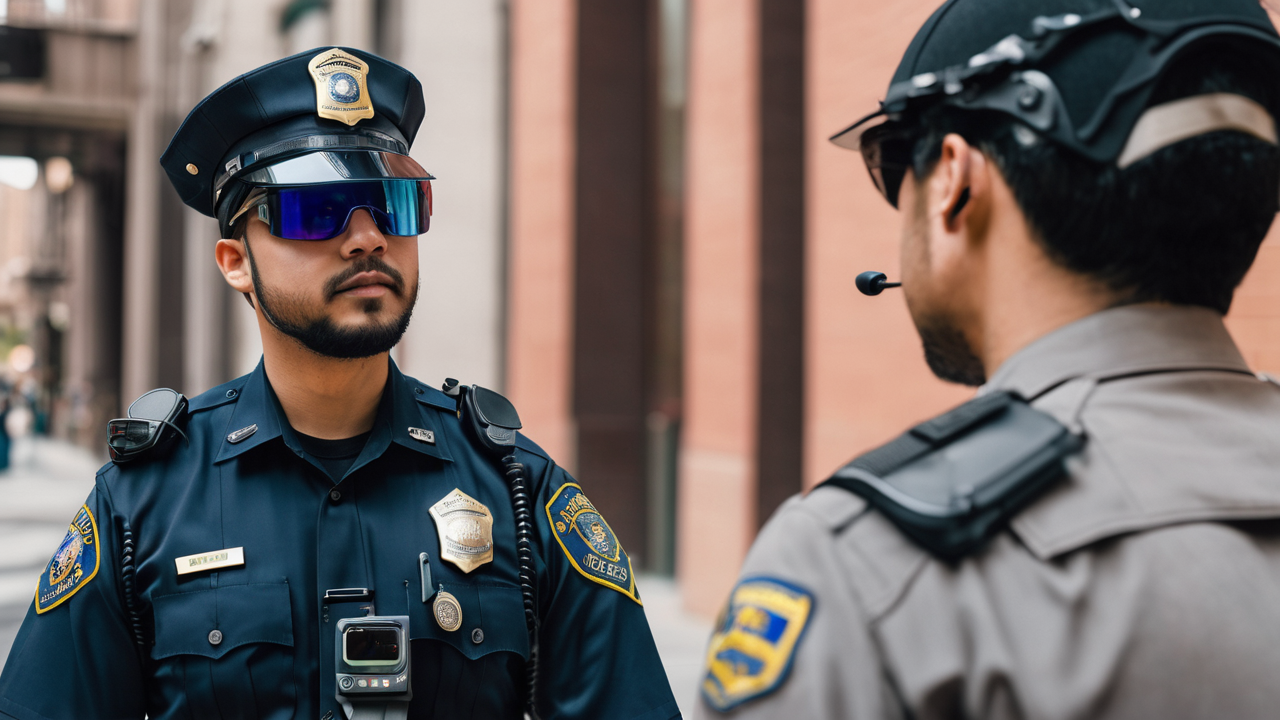The History of Police Communication Technology
The Advent of the Walkie-Talkie in Law Enforcement
Police communication has come a long way since the early days. The walkie-talkie was a game-changer for law enforcement. It allowed officers to stay in touch while on patrol.

These devices first appeared in the 1940s. They were bulky and had limited range. But they gave police a new level of mobility. Officers could now communicate without being tied to a vehicle.
Over time, walkie-talkies became smaller and more powerful. They became a standard tool for police forces worldwide. The ability to coordinate in real-time improved police response and safety.
Advancements in Radio Technology and Their Impact
As technology advanced, so did police radios. Digital systems replaced analog ones. This brought clearer audio and better range. Encryption became standard, enhancing security.
Trunked radio systems allowed more efficient use of frequencies. This meant more officers could communicate at once. GPS integration helped dispatchers track officer locations.
These improvements made police work more effective. Officers could share information faster. This led to quicker response times and better coordination during emergencies.
Comparative Analysis of G86 Walkie-Talkies and Traditional Radios
Technical Specifications and Functional Capabilities
G86 walkie-talkies represent a leap forward in police communication. They offer features that traditional radios can't match. Let's compare their specs and capabilities.

Traditional radios often have limited range and clarity. G86 devices boast extended range and crystal-clear audio. They use advanced digital signal processing to cut through noise.
Battery life is another key difference. G86 units can last entire shifts without recharging. Traditional radios often need frequent battery changes.
G86 walkie-talkies also support data transmission. This allows for text messages and small file transfers. Traditional radios are typically limited to voice communication only.
User Interface and Convenience Factors
The user experience is where G86 walkie-talkies really shine. They have intuitive interfaces that are easy to use even with gloves on. Large, backlit displays make reading information simple in any lighting.
Traditional radios often have small screens and complicated menus. This can be frustrating in high-stress situations. G86 devices streamline operations with customizable buttons.
Weight and size are important for officers carrying gear all day. G86 units are compact and lightweight. Traditional radios can be bulky and add unnecessary weight to an officer's belt.
Security and Encryption Features
Security is paramount in law enforcement communication. G86 walkie-talkies use state-of-the-art encryption. This ensures that sensitive information stays private.
Many traditional radios use older encryption methods. These can be vulnerable to interception. G86 devices employ end-to-end encryption that's nearly impossible to crack.
G86 units also offer features like remote kill switches. If a device is lost or stolen, it can be disabled remotely. This level of security isn't common in traditional radio systems.
The Future of Law Enforcement Communication
Innovations in Tactical Communications Gear
The future of police communication is exciting. New technologies are emerging that will change how officers work. Wearable devices are becoming more common.

Smart glasses could display important information right in an officer's field of view. This would allow hands-free access to data and communication.
Bone conduction headsets are another innovation. They let officers hear radio calls without blocking ambient sound. This improves situational awareness.
Artificial intelligence is also entering the field. AI could help filter and prioritize radio traffic. This would reduce information overload for officers.
Integration with Other Law Enforcement Technologies
Future communication systems will integrate seamlessly with other police tech. Body cameras could sync with radios to provide visual context during calls.
Drones might relay video feeds directly to officer's communication devices. This would give real-time aerial views of situations.
Vehicle systems could connect to personal radios. This would allow for automatic status updates when officers leave their cars.
The goal is a unified system where all devices work together. This would create a more efficient and effective police force.
Preparing for Next-Gen Communication Systems
As technology advances, police departments must prepare for change. Training will be crucial to make the most of new systems. Officers will need to learn new skills and adapt to new tools.
Departments should plan for regular upgrades. Technology moves fast, and staying current is important. This might mean budgeting for more frequent equipment replacements.
Cybersecurity will become even more critical. As systems become more connected, they also become more vulnerable. Protecting against hacks and data breaches will be a top priority.
The shift to next-gen systems will be gradual. Departments should phase in new technology carefully. This ensures a smooth transition without disrupting operations.
In conclusion, police communication has evolved dramatically. From simple radios to advanced G86 walkie-talkies, the tools have improved. The future promises even more exciting changes. As technology advances, so too will the ability of law enforcement to serve and protect.


